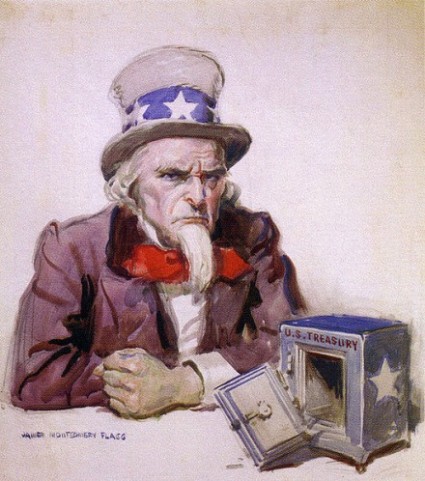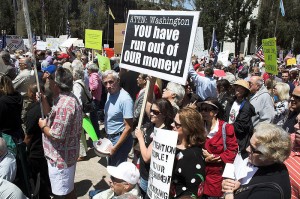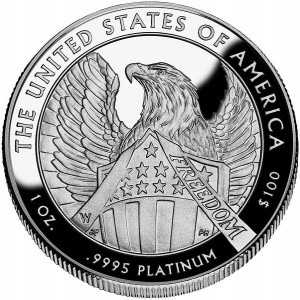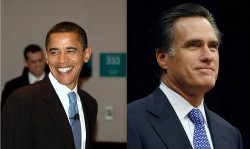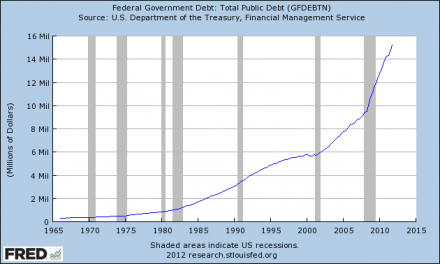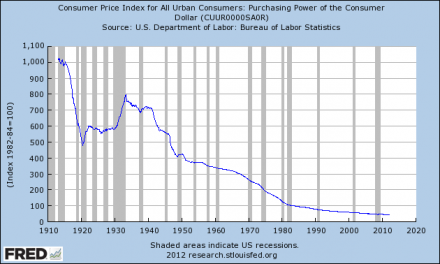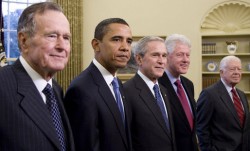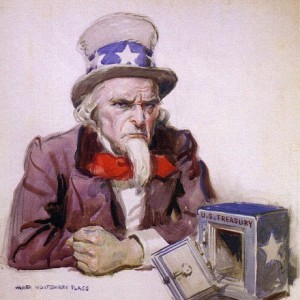 If you are like most Americans, paying taxes is one of your pet peeves. The deadline to file your federal taxes is coming up, and this year Americans will spend more than 7 billion hours preparing their taxes and will hand over more than four trillion dollars to federal, state and local governments. Americans will fork over nearly 30 percent of what they earn to pay their income taxes, but that is only a small part of the story. As you will see below, there are dozens of other taxes that Americans pay every year. Of course not everyone pays all of these taxes, but without a doubt we are all being taxed into oblivion. It is like death by a thousand paper cuts. Our politicians have become extremely creative in finding ways to extract money from all of us, and most Americans don’t even realize what is being done to them. By the time it is all said and done, a significant portion of the population ends up paying more than half of what they earn to the government. That is fundamentally wrong, but nothing will be done about it until people start demanding change. The following is a list of 97 taxes Americans pay every year…
If you are like most Americans, paying taxes is one of your pet peeves. The deadline to file your federal taxes is coming up, and this year Americans will spend more than 7 billion hours preparing their taxes and will hand over more than four trillion dollars to federal, state and local governments. Americans will fork over nearly 30 percent of what they earn to pay their income taxes, but that is only a small part of the story. As you will see below, there are dozens of other taxes that Americans pay every year. Of course not everyone pays all of these taxes, but without a doubt we are all being taxed into oblivion. It is like death by a thousand paper cuts. Our politicians have become extremely creative in finding ways to extract money from all of us, and most Americans don’t even realize what is being done to them. By the time it is all said and done, a significant portion of the population ends up paying more than half of what they earn to the government. That is fundamentally wrong, but nothing will be done about it until people start demanding change. The following is a list of 97 taxes Americans pay every year…
#1 Air Transportation Taxes (just look at how much you were charged the last time you flew)
#2 Biodiesel Fuel Taxes
#3 Building Permit Taxes
#4 Business Registration Fees
#5 Capital Gains Taxes
#6 Cigarette Taxes
#7 Court Fines (indirect taxes)
#8 Disposal Fees
#9 Dog License Taxes
#10 Drivers License Fees (another form of taxation)
#11 Employer Health Insurance Mandate Tax
#12 Employer Medicare Taxes
#13 Employer Social Security Taxes
#14 Environmental Fees
#15 Estate Taxes
#16 Excise Taxes On Comprehensive Health Insurance Plans
#17 Federal Corporate Taxes
#18 Federal Income Taxes
#19 Federal Unemployment Taxes
#20 Fishing License Taxes
#21 Flush Taxes (yes, this actually exists in some areas)
#22 Food And Beverage License Fees
#23 Franchise Business Taxes
#24 Garbage Taxes
#25 Gasoline Taxes
#26 Gift Taxes
#27 Gun Ownership Permits
#28 Hazardous Material Disposal Fees
#29 Highway Access Fees
#30 Hotel Taxes (these are becoming quite large in some areas)
#31 Hunting License Taxes
#32 Import Taxes
#33 Individual Health Insurance Mandate Taxes
#34 Inheritance Taxes
#35 Insect Control Hazardous Materials Licenses
#36 Inspection Fees
#37 Insurance Premium Taxes
#38 Interstate User Diesel Fuel Taxes
#39 Inventory Taxes
#40 IRA Early Withdrawal Taxes
#41 IRS Interest Charges (tax on top of tax)
#42 IRS Penalties (tax on top of tax)
#43 Library Taxes
#44 License Plate Fees
#45 Liquor Taxes
#46 Local Corporate Taxes
#47 Local Income Taxes
#48 Local School Taxes
#49 Local Unemployment Taxes
#50 Luxury Taxes
#51 Marriage License Taxes
#52 Medicare Taxes
#53 Medicare Tax Surcharge On High Earning Americans Under Obamacare
#54 Obamacare Individual Mandate Excise Tax (if you don’t buy “qualifying” health insurance under Obamacare you will have to pay an additional tax)
#55 Obamacare Surtax On Investment Income (a new 3.8% surtax on investment income)
#56 Parking Meters
#57 Passport Fees
#58 Professional Licenses And Fees (another form of taxation)
#59 Property Taxes
#60 Real Estate Taxes
#61 Recreational Vehicle Taxes
#62 Registration Fees For New Businesses
#63 Toll Booth Taxes
#64 Sales Taxes
#65 Self-Employment Taxes
#66 Sewer & Water Taxes
#67 School Taxes
#68 Septic Permit Taxes
#69 Service Charge Taxes
#70 Social Security Taxes
#71 Special Assessments For Road Repairs Or Construction
#72 Sports Stadium Taxes
#73 State Corporate Taxes
#74 State Income Taxes
#75 State Park Entrance Fees
#76 State Unemployment Taxes (SUTA)
#77 Tanning Taxes (a new Obamacare tax on tanning services)
#78 Telephone 911 Service Taxes
#79 Telephone Federal Excise Taxes
#80 Telephone Federal Universal Service Fee Taxes
#81 Telephone Minimum Usage Surcharge Taxes
#82 Telephone State And Local Taxes
#83 Telephone Universal Access Taxes
#84 The Alternative Minimum Tax
#85 Tire Recycling Fees
#86 Tire Taxes
#87 Tolls (another form of taxation)
#88 Traffic Fines (indirect taxation)
#89 Use Taxes (Out of state purchases, etc.)
#90 Utility Taxes
#91 Vehicle Registration Taxes
#92 Waste Management Taxes
#93 Water Rights Fees
#94 Watercraft Registration & Licensing Fees
#95 Well Permit Fees
#96 Workers Compensation Taxes
#97 Zoning Permit Fees
Yet despite all of this oppressive taxation, our local governments, our state governments and our federal government are all absolutely drowning in debt.
When the federal income tax was originally introduced a little more than 100 years ago, most Americans were taxed at a rate of only 1 percent.
But once they get their feet in the door, the social planners always want more.
Since that time, tax rates have gone much higher and the tax code has exploded in size.
Why do we have to have the most convoluted tax system in the history of the planet?
Why can’t things be simpler?
In a previous article entitled “24 Outrageous Facts About Taxes In The United States That Will Blow Your Mind“, I listed a number of reasons why our federal income tax system has become a complete and utter abomination that is entirely out of control…
1 – The U.S. tax code is now 3.8 million words long. If you took all of William Shakespeare’s works and collected them together, the entire collection would only be about 900,000 words long.
2 – According to the National Taxpayers Union, U.S. taxpayers spend more than 7.6 billion hours complying with federal tax requirements. Imagine what our society would look like if all that time was spent on more economically profitable activities.
3 – 75 years ago, the instructions for Form 1040 were two pages long. Today, they are 189 pages long.
4 – There have been 4,428 changes to the tax code over the last decade. It is incredibly costly to change tax software, tax manuals and tax instruction booklets for all of those changes.
5 – According to the National Taxpayers Union, the IRS currently has 1,999 different publications, forms, and instruction sheets that you can download from the IRS website.
6 – Our tax system has become so complicated that it is almost impossible to file your taxes correctly. For example, back in 1998 Money Magazine had 46 different tax professionals complete a tax return for a hypothetical household. All 46 of them came up with a different result.
7 – In 2009, PC World had five of the most popular tax preparation software websites prepare a tax return for a hypothetical household. All five of them came up with a different result.
8 – The IRS spends $2.45 for every $100 that it collects in taxes.
9 – According to The Tax Foundation, the average American has to work until April 17th just to pay federal, state, and local taxes. Back in 1900, “Tax Freedom Day” came on January 22nd.
10 – When the U.S. government first implemented a personal income tax back in 1913, the vast majority of the population paid a rate of just 1 percent, and the highest marginal tax rate was just 7 percent.
If it was up to me, I would abolish the income tax and shut the IRS down.
But neither major political party in the United States is even willing to consider such a thing.
So the monstrous system that we have created will continue to get even bigger and even more complicated.
We are literally being taxed into oblivion, and most Americans don’t even seem to care.


